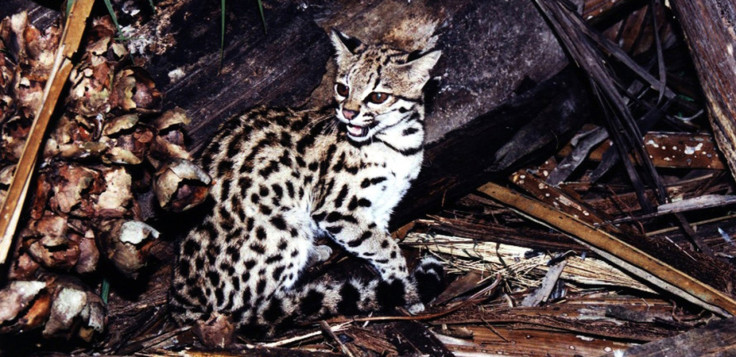New Species Of Wild Cat Discovered In Brazilian Forests

Researchers have identified a new species of wild cat in Brazil, after DNA evidence helped identify two animals previously thought to have belonged to the same species, according to a new study.
The tigrina -- a house cat-sized Brazilian wild cat -- scientists had so far believed, was only a single species. But, molecular data have revealed that tigrina populations in northeastern and southern Brazil are completely separate. There also was no evidence of interbreeding between them, leading the researchers to determine that they are best described as two distinct species.
“Our study highlights the need for urgent attention focused on the Brazilian northeastern tigrinas, which are virtually unknown with respect to most aspects of their biology,” Eduardo Eizirik of Pontifícia Universidade Católica do Rio Grande do Sul in Brazil said, in a statement, noting that relatively much more is known about the cats living in the southern part of the country.
The results of the study, published in Current Biology on Wednesday, have implications for conservation efforts, such as laws about poaching and the designation of national parkland, National Geographic reported.
According to the study, there is a set of complicated relationships between the two tigrina species and two other species of neotropical cats. While evolutionary history includes ancient hybridization -- mixing of different species -- and movement of genes between the pampas cat and the northeastern tigrinas (leopardus tigrinus), the newly identified southern tigrinas (leopardus guttulus) continue to hybridize with Geoffroy's cats.
Christopher Johnson, a professor of wildlife conservation from the University of Tasmania, said the study hints that hybridization in the past accelerated the creation of a new species. According to him, the acquisition of new genes by hybridization can be a powerful force in the evolution of species.
“We used to think that hybridization between related species was not supposed to happen - by definition, species did not interbreed - but it’s clearly more significant than was realized,” Johnson was quoted by The Conversation as saying.
The researchers believe that the two tigrina species may be suited to different habitats. While the northeastern cats live primarily in savannahs and dry shrub land and forests, the southern cats live in denser and wetter Atlantic forests.
“Such distinct habitat associations provide a hint to potentially adaptive differences between these newly recognized species and may have been involved in their initial evolutionary divergence,” Tatiane Trigo of Universidade Federal do Rio Grande do Sul said, in the statement. “All four species are threatened, and we need to understand as much as possible regarding their genetics, ecology, and evolution to be able to design adequate conservation strategies on their behalf.”
© Copyright IBTimes 2024. All rights reserved.






















